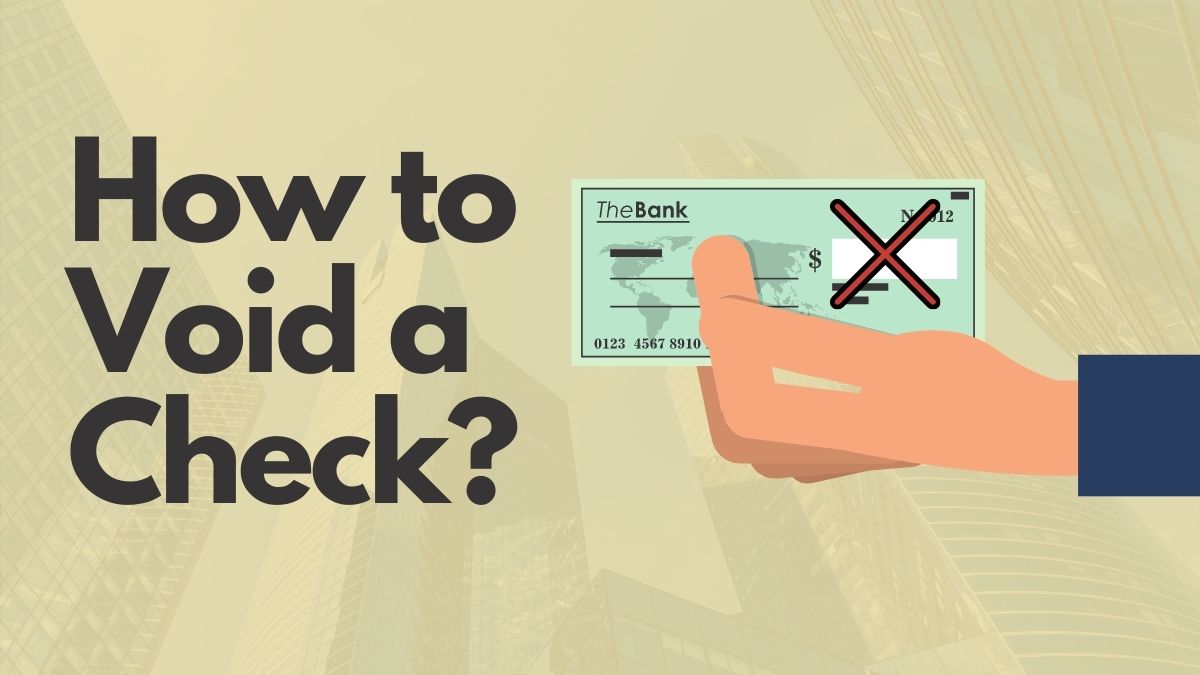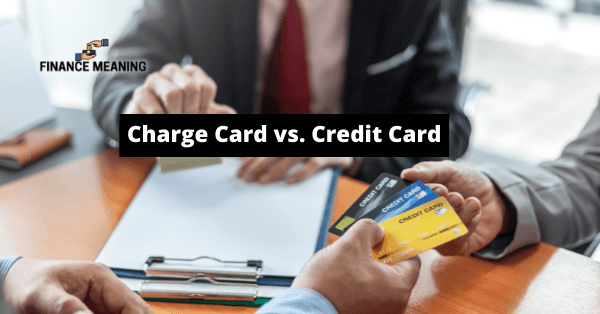Having bad credit can make navigating financial options particularly challenging, especially when it comes to refinancing options for homeowners. However, with the right strategies and solutions, it’s still possible to manage and improve your financial situation. This article offers insights into understanding the various refinance options available, steps to take when applying for mortgage refinancing with poor credit, credit improvement strategies to increase refinancing eligibility, credit card considerations for those with adverse credit histories, and answers to frequently asked questions about refinancing with bad credit.
Key Takeaways
- Homeowners with bad credit have multiple refinancing options, including conventional, FHA, VA, USDA, and portfolio loans, as well as Fannie Mae’s RefiNow and Freddie Mac’s Refi Possible programs.
- Applying for a mortgage refinance with bad credit involves preparing necessary documents, choosing the right lender, and understanding the application process.
- Improving credit score, building a healthy payment history, and reducing debt-to-income ratio are critical steps in qualifying for a bad credit loan.
- Secured credit cards are a viable option for those with bad credit, offering a pathway to rebuild creditworthiness.
- It is possible to refinance with a credit score as low as 500, but it requires careful planning and understanding of the refinancing process.
Understanding Refinance Options for Homeowners with Bad Credit


Conventional Refinance
When considering a conventional refinance, homeowners with less-than-ideal credit may face challenges, but it’s not impossible to secure approval. Lenders typically look for a strong payment history and sufficient home equity.
- Credit Score Requirements: While higher scores are preferred, some flexibility may exist for those with lower scores.
- Equity: Having more equity in your home can improve your chances of approval.
- Interest Rates: Expect higher rates compared to borrowers with better credit.
It’s essential to understand that terms can vary significantly between lenders, so shopping around for the best offer is crucial.
Remember, a conventional refinance is just one path among many. If this option seems out of reach, government-backed programs might provide an alternative solution tailored to your situation.
FHA Refinance Programs
The Federal Housing Administration (FHA) offers several refinance options for homeowners with less-than-perfect credit. FHA Streamline Refinance is a popular choice, allowing current FHA loan holders to refinance without the extensive documentation and appraisal requirements typically associated with refinancing.
Another option is the FHA Simple Refinance, which aims to reduce your interest rate and monthly payments. This program is less demanding in terms of paperwork compared to traditional refinancing routes.
For those looking to incorporate home improvements into their refinancing plan, the FHA 203(k) Refinance provides a pathway to cover renovation costs. Lastly, the FHA Cash-Out Refinance option permits homeowners to extract equity from their property and add it to a new, potentially more favorable loan.
It’s important to note that while FHA refinance programs are designed to assist those with bad credit, eligibility criteria still apply. Homeowners should ensure they meet the requirements and consider getting quotes from multiple lenders to secure the best terms.
VA Refinance Programs
Veterans and their families have access to exclusive VA refinance programs designed to help those with less-than-perfect credit. The VA Interest Rate Reduction Refinance Loan (IRRRL) is a streamlined option that simplifies the refinance process, often without the need for extensive documentation or an appraisal. This can be particularly beneficial for veterans seeking to lower their interest rates.
Another option is the VA Cash-Out Refinance, which allows veterans to refinance their existing mortgage—whether VA or non-VA—and extract cash from the equity of their home. This can provide financial flexibility for various needs or expenses.
It’s important to note that VA refinance options are tailored to support the unique needs of service members, veterans, and qualifying spouses, even when facing credit challenges.
For those eligible, VA refinance programs can offer a path to more manageable loan terms and financial stability, despite having bad credit. Exploring these options can be a crucial step in regaining financial footing.
USDA Refinance Programs
Homeowners with an existing USDA loan have several refinance options tailored to different needs and circumstances. USDA Streamlined Refinance offers a more straightforward process, potentially bypassing the need for a credit check and appraisal, making it a viable choice for those looking to simplify their mortgage terms without extensive documentation.
For an even more simplified experience, the USDA Streamlined-Assist Refinance eliminates the requirement for a mortgage appraisal, streamlining the process further. On the other hand, the USDA Non-Streamlined Refinance demands a full credit check, mortgage appraisal, and income review, catering to those who may not qualify for the streamlined options.
In select states, the USDA Pilot Refinance program is available to borrowers with USDA Section 502 Guaranteed Loans. This program is notable for often not requiring an appraisal, which can be a significant hurdle for homeowners with credit concerns.
- USDA Streamlined Refinance: Simplified process, may require credit check and appraisal
- USDA Streamlined-Assist Refinance: No mortgage appraisal needed
- USDA Non-Streamlined Refinance: Full credit check, appraisal, and income review required
- USDA Pilot Refinance: Available in select states, often without appraisal
When considering USDA refinance programs, it’s essential to evaluate which option aligns best with your financial situation and goals. Each program offers unique benefits and requirements that can provide relief and improved terms for your mortgage.
Portfolio Refinance Loan
A portfolio refinance loan may be a viable option for homeowners with bad credit. These loans are held within a lender’s investment portfolio and are not sold on the secondary market. This allows lenders to offer more flexible refinancing options tailored to individual financial situations, even if credit scores are not ideal.
Portfolio loans can be particularly beneficial because they often come with personalized terms. Since the lender retains the loan, they have a vested interest in working with the borrower to ensure the loan remains in good standing. It’s important to note, however, that these loans may come with higher interest rates or fees due to the increased risk the lender assumes.
When considering a portfolio refinance loan, it’s crucial to compare offers from multiple lenders. Each lender has its own criteria for assessing risk and may provide different terms and conditions.
Remember, while portfolio loans offer a path to refinancing for those with less-than-stellar credit, they should be carefully weighed against other available options to ensure they align with your financial goals.
Fannie Mae’s RefiNow and Freddie Mac’s Refi Possible
For homeowners facing the challenges of bad credit, the Fannie Mae RefiNow and Freddie Mac Refi Possible programs offer a lifeline. These initiatives are designed to help those with lower incomes and credit issues by providing refinancing options that may require reduced documentation and often have no minimum credit score requirements, making the dream of refinancing more accessible.
The goal of these programs is to broaden the reach of refinancing solutions, ensuring that more homeowners can benefit from potentially lower mortgage rates and improved loan terms.
Eligibility for these programs typically hinges on income limits and the current loan being owned by either Fannie Mae or Freddie Mac. Here’s a quick rundown of the benefits:
- Potential for lower interest rates
- Reduced or waived appraisal fees
- Lower monthly mortgage payments
- Streamlined application process
It’s important to review the specific requirements and benefits of each program to determine which one aligns best with your financial situation.
The Road to Mortgage Refinancing with Poor Credit
How to Apply for a Bad Credit Mortgage Refinance
Applying for a mortgage refinance with bad credit may seem daunting, but with the right preparation, it’s achievable. Start by gathering all necessary documents to streamline the process. This typically includes proof of income, such as recent pay stubs and tax returns, asset information from bank and investment accounts, and a list of current monthly debt obligations.
Before diving into the application, it’s crucial to understand the landscape of bad credit refinancing options. Here’s a quick overview of the types of programs available:
- Conventional Refinance
- FHA Refinance Programs
- VA Refinance Programs
- USDA Refinance Programs
- Portfolio Refinance Loan
- Fannie Mae’s RefiNow and Freddie Mac’s Refi Possible
While it’s not impossible to refinance with a bad credit score, it’s essential to do your homework and understand the impact of your credit on the process. Higher interest rates and closing costs, as well as the risk of loan rejection, are factors to consider.
Finally, take proactive steps to improve your chances of approval. This includes working on boosting your credit score, ensuring a healthy payment history, and reducing your debt-to-income ratio. These efforts can make a significant difference in the refinancing options available to you.
Preparing Necessary Documents
Before diving into the application process, it’s crucial to have all your financial documents in order. Gathering these documents beforehand can streamline the process and minimize delays. Most lenders will require a variety of documents to assess your financial situation:
- Proof of income, such as recent pay stubs, W-2 statements, or tax returns.
- Asset information, including bank statements and investment account records.
- A comprehensive list of debts, detailing your current monthly obligations.
Ensure that all documents are up-to-date and accurately reflect your financial status. Discrepancies can cause setbacks and affect the lender’s decision.
Remember, the more organized and prepared you are, the smoother the refinancing journey will be. It’s also advisable to review your credit report for any errors and dispute them if necessary, as this could positively impact your credit scores.
Choosing the Right Lender
When looking for a lender to refinance your mortgage with bad credit, it’s essential to compare options and terms carefully. Start by creating a shortlist of lenders that have a track record of working with borrowers with adverse credit histories. Consider the following steps:
- Review each lender’s refinance options and applicable rates.
- Check for any additional fees, such as origination fees, early payoff penalties, and late fees.
- Use prequalification forms to avoid hard inquiries on your credit report.
Remember, lenders may offer higher interest rates to those they consider "riskier" due to bad credit. It’s crucial to understand the terms and conditions of the loan before proceeding. A co-signer or co-borrower with a good credit score can also be beneficial, as they can help you secure better loan terms.
Be diligent in reviewing the terms offered by lenders. A thorough comparison can save you from unfavorable conditions and ensure that you find a refinancing deal that aligns with your financial situation.
Going through the Application Process
Once you’ve selected a lender, the next step is to submit a formal application for refinancing. This involves providing your social security number and supporting documents like bank statements and pay stubs. The lender will then give you a loan estimate, which details the terms, interest rate, and borrowing costs.
After submitting your application, the waiting period for final approval can vary. It’s best to apply during normal business hours and ensure all documents are submitted promptly to expedite the process.
If pre-approved, you’ll need to supply any additional documentation the lender requests. The underwriting team will review your information before issuing a final decision. Once approved, you’ll be asked for bank account details for fund transfer or you may opt for a paper check or direct creditor payment in some cases.
Other Tips for Refinancing Mortgage with Bad Credit
When considering refinancing your mortgage with less-than-ideal credit, exploring all available options is crucial. Here are additional tips to enhance your chances of approval:
- Consult with a credit counselor: A professional can provide personalized advice on improving your financial situation.
- Consider a co-signer: Having someone with better credit co-sign your refinance can improve your application’s strength.
- Shop around for rates: Don’t settle for the first offer; compare rates from multiple lenders to find the best deal.
- Negotiate with lenders: Sometimes, lenders are willing to work with you on terms if you explain your situation.
Remember, refinancing is not a one-size-fits-all solution. Your financial circumstances and the lender’s requirements will ultimately determine the best path forward.
Credit Improvement Strategies for Refinancing Eligibility


Improving Your Credit Score
Your credit score is a key factor in mortgage refinancing eligibility. Regularly reviewing your credit report for inaccuracies and disputing any errors are essential first steps. It’s also important to maintain timely payments on all accounts, as payment history significantly impacts your score.
Keeping your credit utilization ratio low is another effective strategy. Aim to use no more than 30% of your available credit across all revolving accounts. This demonstrates to lenders that you manage credit responsibly. Avoid opening new credit lines during this period, as this can temporarily lower your score.
By focusing on these credit improvement tactics, you can gradually enhance your creditworthiness, making you a more attractive candidate for refinancing options.
Here are some actionable steps to consider:
- Check your credit report for errors and dispute any you find.
- Make all payments on time to build a positive payment history.
- Keep credit card balances well below your credit limits.
- Refrain from applying for new credit while working to improve your score.
Building a Healthy Payment History
Building a healthy payment history is essential for anyone looking to improve their credit score and refinance eligibility. Making all your payments on time is a fundamental step in this process. It’s not just about avoiding late fees; timely payments reflect positively on your credit report and demonstrate financial reliability to potential lenders.
- Rectify any errors on your credit report to ensure accuracy.
- Pay bills on time to avoid negative marks on your credit history.
- Keep balances low on credit cards to show responsible credit utilization.
- Consider becoming an authorized user on a trusted person’s account to benefit from their positive payment history.
- Explore the option of a secured credit card to build credit if you have limited options.
Remember, a history of on-time payments can significantly influence your credit score, which is a critical factor in the refinancing process. Consistency is key, and even one late payment can have a detrimental effect, so it’s crucial to stay vigilant and manage your finances carefully.
Reducing Your Debt-to-Income Ratio
Your debt-to-income ratio (DTI) is a key metric that lenders evaluate during the refinancing process. To improve your DTI, it’s essential to reduce your overall debt burden. Start by focusing on high-interest debts, as paying these down can have a significant impact on your financial health.
Managing debt involves understanding good debt versus bad debt, prioritizing repayment, and creating a debt management plan. It’s important to tackle debts strategically, which often means paying more than the minimum on high-interest debts while maintaining minimum payments on others.
Creating a budget is crucial in this endeavor. A well-structured budget helps you track income and expenses, revealing opportunities to cut back and allocate extra funds toward debt reduction. This disciplined financial management is instrumental in lowering your DTI and enhancing your creditworthiness.
Lastly, gaining a comprehensive understanding of your debts is imperative. Assess each debt’s balance, interest rate, and terms to develop a targeted repayment plan. Prioritize debts with higher interest rates to minimize total interest paid over time, and consider seeking professional guidance if needed.
Help for Low Credit Scores
Individuals with low credit scores often face challenges when seeking financial products, but there are strategies and solutions available to help. Improving your credit score is crucial for refinancing eligibility. Start by checking your credit reports for errors and disputing any inaccuracies. Additionally, maintaining timely payments and keeping credit utilization low are key steps in building a healthy payment history.
For those with scores below 670, it’s important to know that certain lenders specialize in working with such candidates. These lenders may offer loans for emergency expenses, refinancing high-interest debt, or consolidating debt payments. Here’s a list of potential aids for those with low credit scores:
- Best Credit Cards for Bad Credit
- Personal Loans for 580 Credit Score or Lower
- Best Mortgages for Bad Credit
- How to Boost Your Credit Score
Confirm that refinancing is right for you and start monitoring — and improving — your credit. Talk to your current mortgage lender and estimate your loan-to-value ratio as preliminary steps.
Credit Card Considerations for Those with Adverse Credit Histories


Types of Credit Cards for Bad Credit
Individuals with bad credit often face challenges when seeking credit card approval, but there are still options tailored to their needs. Credit bureaus assign credit ratings, and a low credit score typically indicates a history of difficulties in paying loans. However, options for borrowers with bad credit include both secured and unsecured cards.
Secured credit cards are a common choice for those looking to rebuild credit. They require a security deposit which acts as collateral and usually sets the credit limit. Unsecured cards for bad credit, on the other hand, do not require a deposit but may come with higher interest rates and fees.
When considering credit cards for bad credit, it’s crucial to compare fees, interest rates, and credit limits to find the most suitable option for your financial situation.
Remember, responsibly managing a credit card for bad credit can be a step towards improving your credit score over time.
Secured Credit Cards
Secured credit cards offer a pathway for individuals with bad credit to rebuild their creditworthiness. By placing a security deposit with the issuer, you create a safety net that allows for the issuance of a card, typically with a credit limit equivalent to the deposit amount. This deposit acts as collateral, reducing the risk for the issuer and increasing the likelihood of approval for those with less-than-stellar credit histories.
When considering a secured credit card, it’s crucial to weigh the advantages against the potential drawbacks. For instance, while these cards can be instrumental in improving your credit score, they may come with higher fees or interest rates compared to unsecured cards. Additionally, not all secured cards report to the major credit bureaus, which is essential for building credit.
It’s important to choose a secured credit card that aligns with your financial goals and offers clear terms for progression towards an unsecured card.
Here are some key points to keep in mind when exploring secured credit card options:
- Look for cards that report to all three major credit bureaus.
- Compare annual fees and interest rates among different cards.
- Understand the terms for returning your security deposit.
- Check if the card offers a pathway to ‘graduate’ to an unsecured card.
Before You Apply for a Credit Card for Bad Credit
When considering a credit card application, reviewing your credit report and score is a crucial first step. Understanding your credit status allows you to target cards designed for your financial situation. Here are some preparatory actions to take:
- Check your credit report: Identify any errors that could be affecting your score negatively.
- Assess your needs: Determine if a secured card, which requires a deposit, is suitable for you.
- Research: Look for cards that cater to individuals with less-than-perfect credit.
Remember, applying for a credit card with bad credit doesn’t mean you’re out of options. It’s about finding the right fit for your circumstances and using the card responsibly to rebuild your credit.
Eligibility criteria and minimum security deposits are key considerations, especially if you’re leaning towards a secured credit card. Be mindful of the cards’ terms and choose one that aligns with your financial capacity and credit improvement goals.
Frequently Asked Questions About Refinancing with Bad Credit


Can You Refinance with a 500 Credit Score?
Refinancing a mortgage with a 500 credit score is challenging, yet not impossible. The FHA Streamline Refinance program is a viable option for those with an existing FHA mortgage. This program aims to reduce your interest rate or monthly payments without a detailed credit check or property appraisal.
While the minimum credit score for a conventional mortgage refinance is typically around 620, government-backed loans offer more leniency. FHA loans, for instance, may allow refinancing with scores as low as 500, provided other criteria are met.
With the right approach and understanding of the refinancing process, homeowners with less-than-ideal credit can navigate their options to achieve financial improvement.
Remember, a guide on managing a 600 credit score can provide valuable insights into improving your credit, exploring loan options, and understanding the impact on mortgage rates. Timely payments and reducing debt are crucial steps in this journey.
FAQs About Refinancing a Mortgage with Bad Credit
Refinancing a mortgage with bad credit can be challenging, but it’s not impossible. Understanding the implications of bad credit on the refinancing process is crucial. Homeowners may face higher interest rates, increased closing costs, and a higher risk of loan rejection. However, there are strategies to improve your chances of approval and secure better terms.
It’s essential to be proactive about improving your creditworthiness before applying for a refinance. This includes paying down debts, keeping accounts open to establish a longer credit history, setting up automatic payments to avoid late fees, and regularly checking interest rates to find the most favorable options.
For those considering credit cards as a means to rebuild credit, it’s important to understand the differences between secured and unsecured cards. Secured cards typically require a deposit, which serves as collateral, while unsecured cards may have higher interest rates but do not require upfront cash.
Here are some additional tips:
- Review your credit report for errors and dispute any inaccuracies.
- Aim to keep your credit utilization low.
- Consider reaching out to a credit counselor for personalized advice.
Conclusion: Overcoming Financial Hurdles with Poor Credit
In conclusion, while bad credit can present significant challenges when seeking financial products and services, it is not an insurmountable obstacle. The strategies and solutions discussed throughout this article provide a roadmap for individuals to navigate the complex landscape of finance options available to them. By focusing on improving credit scores, building a healthy payment history, and reducing debt-to-income ratios, individuals can enhance their eligibility for better financial products. It’s crucial to conduct thorough research, seek out specialized lenders, and be prepared with the necessary documentation. Remember, every step taken towards financial health not only improves the chances of approval for current needs but also lays the groundwork for a more secure financial future.
Frequently Asked Questions About Refinancing with Bad Credit
Can you refinance with a 500 credit score?
Yes, it is possible to refinance with a 500 credit score, but options may be limited. Government-backed loans such as FHA refinance programs may be available to homeowners with lower credit scores. However, borrowers will likely face higher interest rates and may need to meet additional criteria.
What steps can I take to improve my chances of refinancing with bad credit?
To improve your chances of refinancing with bad credit, work on improving your credit score, building a healthy payment history, reducing your debt-to-income ratio, and choosing the right lender who has experience working with borrowers with lower credit scores.
Are there specific refinance programs for homeowners with bad credit?
Yes, there are specific refinance programs for homeowners with bad credit, including FHA, VA, and USDA refinance programs. Additionally, Fannie Mae’s RefiNow and Freddie Mac’s Refi Possible are options designed to help borrowers with lower credit scores.
What documents will I need to prepare for a bad credit mortgage refinance application?
When applying for a bad credit mortgage refinance, you’ll need to prepare documents such as proof of income, bank statements, tax returns, identification, and details of your current mortgage, along with any other documents your lender may require.
Can securing a credit card help improve my credit score for refinancing?
Securing a credit card, especially a secured credit card, can help improve your credit score if used responsibly. Timely payments and low credit utilization can contribute positively to your credit history, which can be beneficial for future refinancing.
How do I choose the right lender for refinancing with bad credit?
Choose a lender who specializes in loans for borrowers with bad credit and who can offer guidance throughout the process. Research lenders, compare rates and terms, and read reviews to ensure you’re working with a reputable company that can accommodate your specific financial situation.





